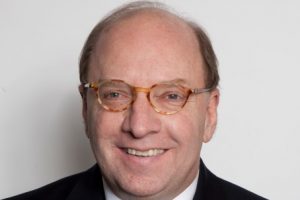
Olympus Growth Fund V, the vintage 2007 fund from Olympus Partners of Stamford, Connecticut, generated an IRR of 19 percent as of June 30 for Regents of the University of California. The performance outpaces the 16.2 percent top-quartile threshold for that vintage year, an analysis of public-pension-fund data by Buyouts shows. Rob Morris, managing partner and founder of the firm, fielded questions on top-quartile performance via a series of February emails with Buyouts.
Olympus Growth Fund V LP raised $1.5 billion in 2007 and has produced a gross IRR well in the top-quartile range. What’s the biggest factor in delivering strong performance?
We have been fortunate in that five of our six funds have been first-quartile. It is impossible to attribute these results to one factor, but certainly discipline on purchase multiples, hard work when companies founder and a thoughtful approach to improving operating results are large contributors.
After Fund V, you raised $2.3 billion for Fund VI in 2013 in less than six months. Since you were able to raise the fund so quickly, did you get to dictate more favorable terms and conditions?
We do not dictate terms. We discuss with our investors what is a reasonable package that recognizes our performance, market conditions and investor sensitivities. A term that has been negotiated lately is the preferred return, a term created by Olympus in the late ’80s as a proxy for the risk-free rate of return. Unfortunately, the market has unwisely made it a fixed rate (ours was originally the seven-year Treasury at the time of each deal funding), which has created a conflict between LP and GP interests for many funds.
Your firm reportedly made 3.7x on the sale of Waddington to Jarden Group for $1.35 billion in 2015 in less than three years. What’s the exit environment seem like in 2017 compared to 2015?
The exit environment today is very similar to 2015. Inexpensive credit is available at high multiples of EBITDA. The public market is fully priced. Consequently, exit multiples are full. In the case of Waddington, your question fails to take into account EBITDA rose from $55 million to over $150 million during our ownership, which created the largest portion of our gain.
Fund VI has roughly seven portfolio companies. One of the standouts appears to be Innovative XCessories & Services, a specialist in protective coatings for pickup-truck beds. What’s the thesis behind IXS?
Putting capital and management behind a best-of-breed product to provide a service to the OEMs — a service that did not make sense for the OEMs to bring in-house as it was not for every vehicle. We now offer the service adjacent to all North American truck factories and through 450 retail franchise outlets. We have also added several upfit services for the OEMs and other products for the franchisees.
Any clouds on the horizon that could dampen the sunny fundraising environment?
Storm clouds in fundraising are usually seeded by a bear market in equities. 2008-2009 was the most recent example of a terrible fundraising period which was triggered by the market crash and by associated illiquidity issues for many investors. Maintaining a good performance and organization is our perpetual objective. If we were to falter in either, we deservedly would have a personal storm cloud.
You wrapped up a busy year in 2016. Is it harder to get a good price when you’re buying from another private equity firm?
Getting good pricing is not a function of the type of seller. A broken PE auction will provide a “good” price as well as a PE auction that is poorly managed. A “good” price is also a relative term as a 7x multiple for a poor company is a bad price whereas 9x multiple for a very good company is a “good” one.
The Trump administration has talked about rolling back Dodd-Frank regulations. Will this hurt PE firms if banks reup their efforts to be GPs?
Actual changes in Dodd-Frank are not yet clear. We would welcome any changes as it pertains to PE as most of our new regulations do not help investors. If banks were to return to the market, we do not think it would have a material effect as it is already a very competitive market.
You’re active in healthcare. Any opportunities there, given potential changes in Obamacare?
We are selling our current healthcare holding as it has achieved several goals we had for its operations. Once actual Obamacare changes exist, there are areas we have identified for purchases.
Do we tend to learn more from our mistakes than our successes and, if so, any deals that didn’t work out that helped you improve?
We learn from both our mistakes and from our successes. There is pattern recognition in both situations. We hope to be able to avoid repeating the mistake patterns and to replicate the patterns of success, be they patterns in marketing, in operations, in pricing or in other areas.


 If you do not receive this within five minutes, please try and sign in again. If the problem persists, please
email:
If you do not receive this within five minutes, please try and sign in again. If the problem persists, please
email: